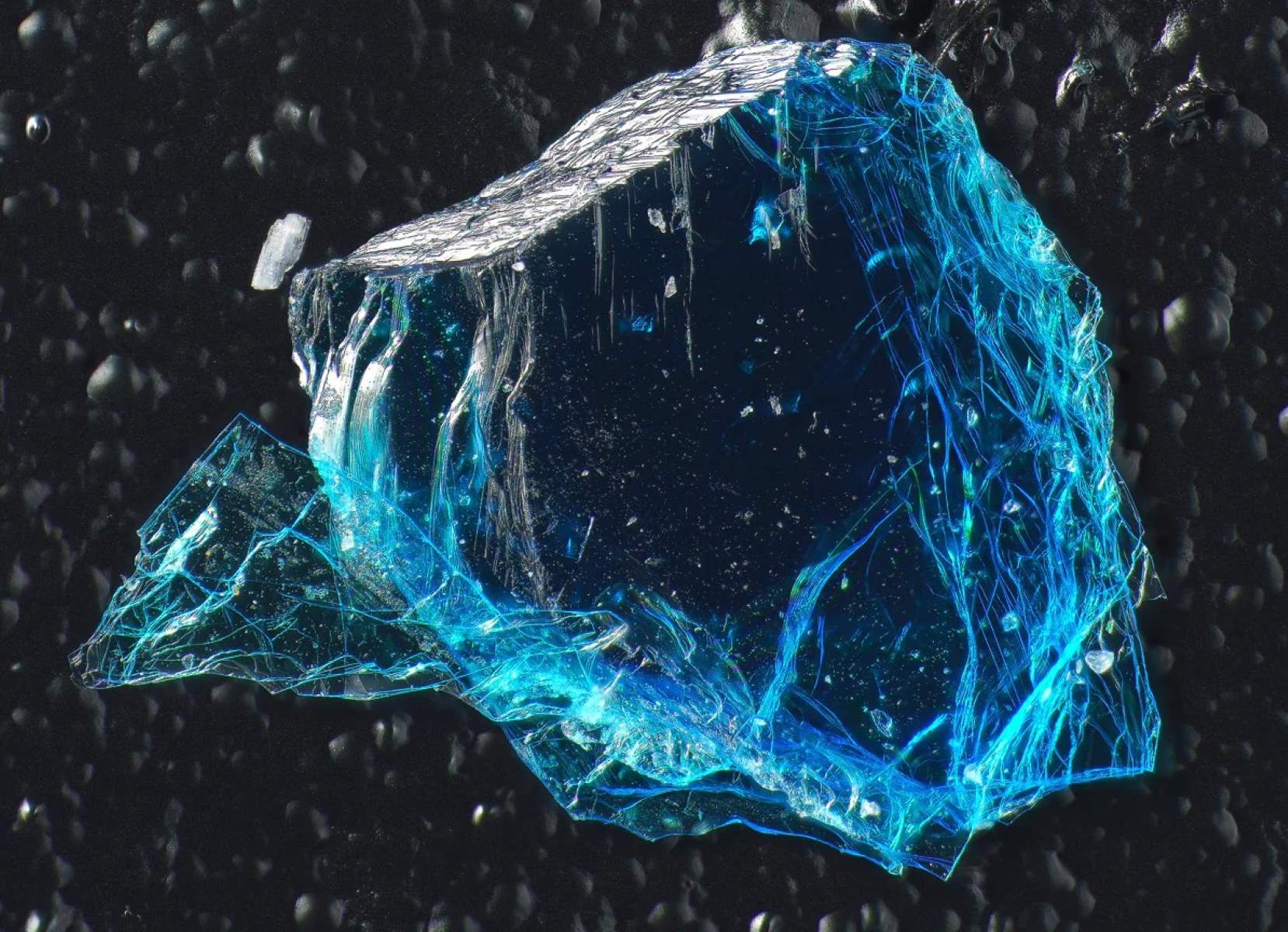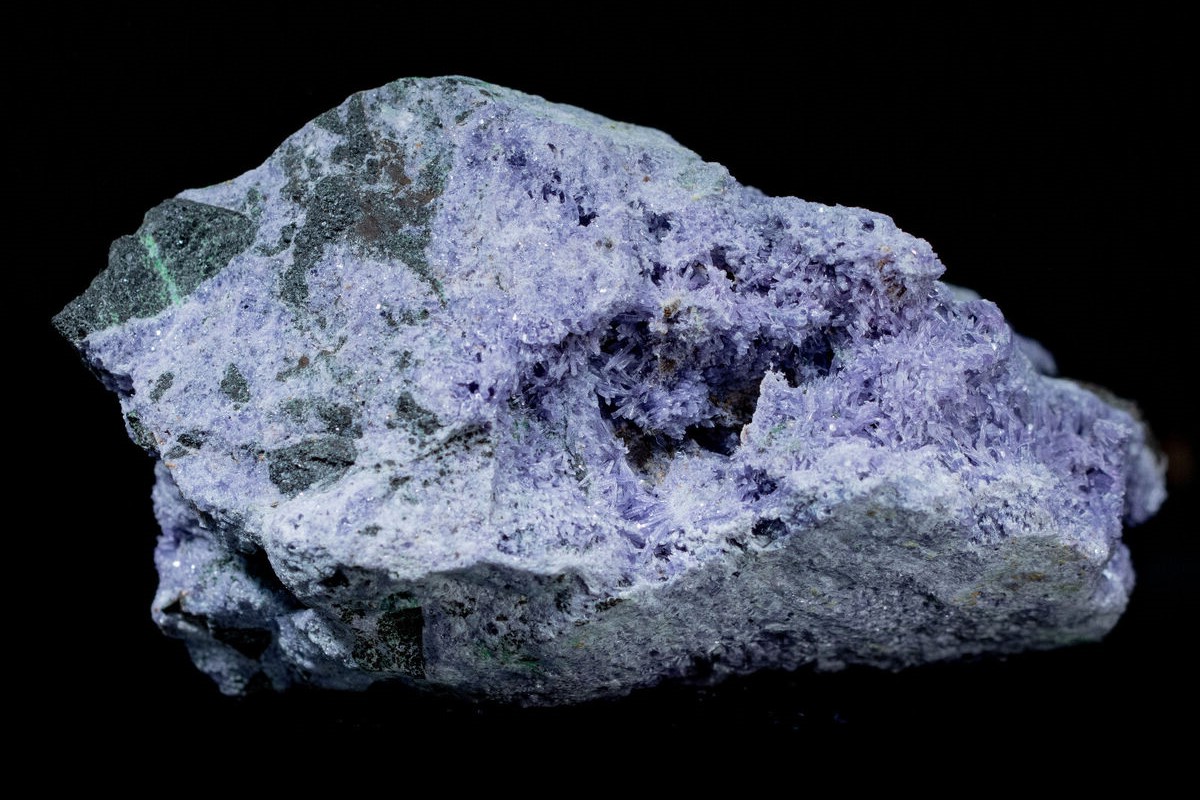
What makes Andyrobertsite so unique? This rare mineral, named after mineralogist Andrew C. Roberts, boasts a complex chemical formula: KCdCu5(AsO4)4(H2AsO4)·2H2O. Found primarily in Namibia's Tsumeb mine, Andyrobertsite stands out with its striking blue color and platy crystal habit. Its rarity is underscored by its cadmium content, a feature shared by only 27 out of 5450 approved mineral species. With a Mohs hardness of 3 and a vitreous luster, this mineral is not just a collector's gem but also a subject of scientific intrigue. Its unique properties and composition make it a fascinating study for geologists and mineralogists alike.
Key Takeaways:
- Andyrobertsite is a rare and fascinating mineral named after a mineralogist. It has unique properties and is found in the Tsumeb mine in Namibia, making it a prized find for scientists and collectors alike.
- With a blue color and a Mohs hardness of 3, andyrobertsite stands out for its physical and optical properties. Its rarity and contribution to mineralogy and scientific research make it a valuable specimen for study and collection.
What is Andyrobertsite?
Andyrobertsite is a rare and complex arsenate mineral that has intrigued scientists and collectors alike. Named after a notable mineralogist, this mineral boasts a unique composition and fascinating properties.
-
Name Origin: Named after Andrew C. Roberts, a mineralogist with the Geological Survey of Canada, who recognized and documented the mineral.
-
Chemical Formula: Its chemical formula is KCdCu5(AsO4)4(H2AsO4)·2H2O, indicating the presence of potassium, cadmium, copper, arsenic, and water molecules.
-
IMA Symbol: The International Mineralogical Association (IMA) symbol for andyrobertsite is Arb, used in scientific literature and databases.
Classification and Structure
Understanding the classification and structure of andyrobertsite helps in identifying and studying this mineral in detail.
-
Strunz Classification: Classified under 8.DH.50 08 in the Strunz system, which organizes minerals based on their chemical composition and crystal structure.
-
Dana Classification: In the Dana system, it falls under 42.09.02.03, grouping minerals by their chemical composition and physical properties.
-
Crystal System: Crystallizes in the monoclinic crystal system, characterized by a single axis of symmetry and two axes of unequal lengths.
-
Crystal Class: The crystal class is prismatic (2/m), indicating specific symmetry and cleavage patterns.
-
Space Group: Belongs to the space group P21/m, crucial for understanding the arrangement of atoms within the crystal lattice.
-
Unit Cell Parameters: Parameters are a = 9.81 Å, b = 10.034 Å, c = 9.975 Å, and β = 101.83°, providing detailed information about the crystal lattice's size and shape.
-
Z Value: The Z value is 2, meaning there are two formula units per unit cell, helping understand the packing efficiency of atoms.
Physical Properties
The physical properties of andyrobertsite make it unique and distinguishable from other minerals.
-
Color: Characterized by a blue color due to the presence of certain elements in its composition.
-
Crystal Habit: Typically forms platy, flat, plate-like crystals.
-
Cleavage: Exhibits good cleavage along the {100} plane, indicating a tendency to break along specific planes.
-
Mohs Hardness: Has a Mohs hardness of 3, making it relatively soft.
-
Luster: Displays a vitreous, glassy appearance.
-
Streak: The streak is pale blue, referring to the color of the mineral when powdered.
-
Diaphaneity: Transparent, allowing light to pass through without significant scattering.
-
Specific Gravity: Has a specific gravity of 4, indicating it is denser than water.
Optical Properties
Andyrobertsite's optical properties are essential for its identification and study under a microscope.
-
Optical Properties: Exhibits biaxial negative optical properties, with different refractive indices for different directions.
-
Refractive Indices: Refractive indices are nα = 1.72, nβ = 1.749, and nγ = 1.757, crucial for understanding its optical behavior.
-
Birefringence: The birefringence is δ = 0.037, observed under a polarizing microscope.
Occurrence and Rarity
Andyrobertsite's rarity and specific geological conditions make it a prized find.
-
Occurrence: Found in the Tsumeb mine in Namibia, known for its rich mineral deposits.
-
Rarity: A rare mineral species due to its complex composition and specific formation conditions.
-
Cadmium Content: Contains cadmium, with only 27 out of 5450 approved mineral species containing this element.
-
Calcioandyrobertsite: A Ca-rich analogue called calcioandyrobertsite has been discovered, with a more greenish tint.
Significance and Research
The significance of andyrobertsite extends beyond its physical properties, contributing to scientific research and education.
-
Mineralogical Significance: The discovery by Andrew C. Roberts has significantly contributed to mineralogy.
-
Scientific Community: Actively studied due to its unique properties and rare occurrence.
-
Educational Value: Provides insights into the complex processes involved in mineral formation, serving as an educational tool.
-
Collection Value: Highly sought after by collectors, considered a prized specimen.
-
Future Research: Ongoing research aims to further understand its crystal structure, optical properties, and geological significance.
The Fascinating World of Andyrobertsite
Andyrobertsite stands out as a rare gem in the mineral world. Named after Andrew C. Roberts, this mineral's unique composition and properties make it a subject of great interest. With a chemical formula of KCdCu5(AsO4)4(H2AsO4)·2H2O, it boasts elements like potassium, cadmium, and copper. Found primarily in the Tsumeb mine in Namibia, its blue color and platy crystal habit are distinctive. Despite its rarity, andyrobertsite offers valuable insights into mineral formation and geological processes. Its cadmium content, shared by only 27 other minerals, adds to its significance. Collectors and scientists alike prize andyrobertsite for its unique characteristics and educational value. As research continues, this mineral will undoubtedly reveal even more about the Earth's mineralogical diversity. Andyrobertsite isn't just a mineral; it's a window into the complexities of our planet's geology.
Frequently Asked Questions
Was this page helpful?
Our commitment to delivering trustworthy and engaging content is at the heart of what we do. Each fact on our site is contributed by real users like you, bringing a wealth of diverse insights and information. To ensure the highest standards of accuracy and reliability, our dedicated editors meticulously review each submission. This process guarantees that the facts we share are not only fascinating but also credible. Trust in our commitment to quality and authenticity as you explore and learn with us.


